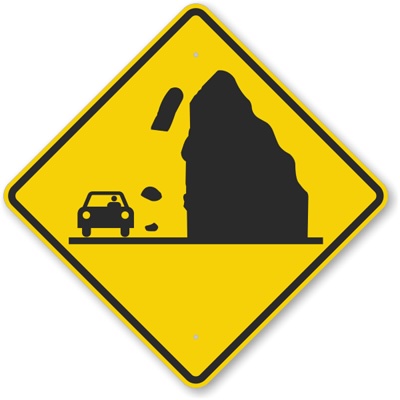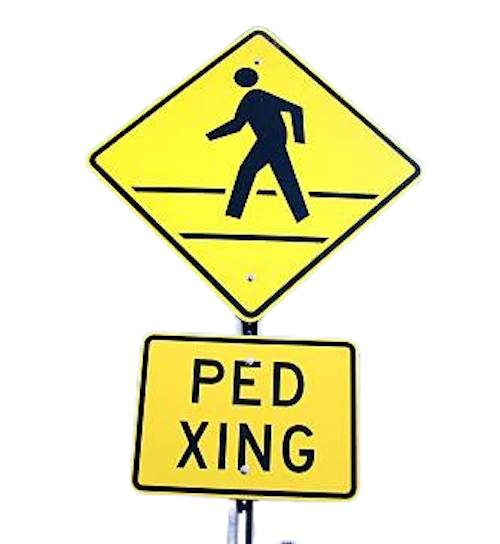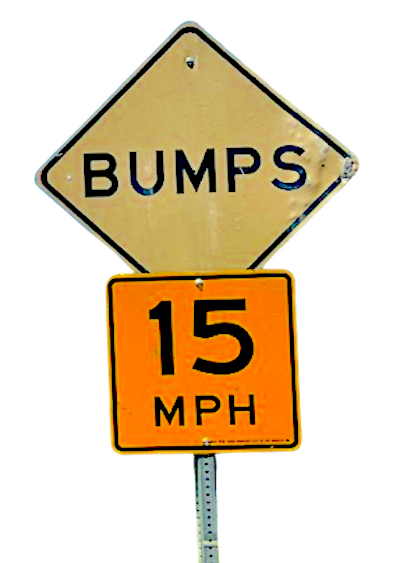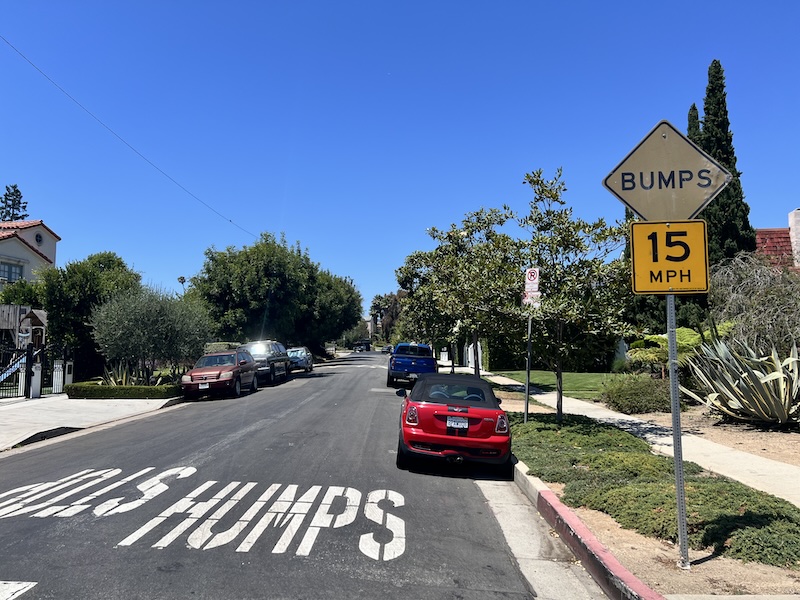I don’t understand this sign 👇🏽👇🏽👇🏽

Well, let me clarify.
I understand that the sign means I am driving in an area where loose rocks may fall off the mountainside.
What I don’t understand, is the purpose of the sign.
Stick with me here, because there’s an important lesson on leadership that I’m about to drop like a hot mic at a rainy concert.
The Opposite Of Poor Communication Signs
I understand the purpose of most street signs. For instance, these three make a ton of sense to me.

When I see those signs I stop, I yield or I merge, as the case may be.
I even understand the purpose of this one.

When I see a pedestrian pedestrian-ing, I stop and let them pass. Easy peasy.
But let’s go back to that falling rock sign.
When I see the sign, I understand that I’m entering a location where rocks may randomly fall off the mountainside.
But here’s my question:
What exactly am I expected to do with this information?
There aren’t any words on the sign to give me clear direction. There isn’t even a hint as to my options.
Should I drive while looking up the mountainside?
That seems a wee bit dangerous.
Should I turn around and go a different route?
That seems like a bad idea.
What if I see a falling rock – should I swerve into oncoming traffic?
That seems like a bad idea too.
As far as I can tell, the only purpose of the sign is to warn me that I may be about to die and there’s not much I can do about it.
It seems to me the sign should just say something like this:
“Rocks may fall and kill you. Godspeed, bucko.”
The Confusing Signs Of Poor Communication
Down the block from my house is this street sign. 👇🏽👇🏽👇🏽

That sign seems like a reasonable enough warning that I should be slowing down.
But not 5 feet from “bumps” sign is this road marking:

Don’t believe me? Check it out:

Sooo….is it a bump or a hump?
Are the two notifications even talking about the same thing? Will I encounter both a bump AND a hump if I continue down the road, and if so, how will I know the difference?
I’m going to go out on a limb here and assume that the sign-making team and the street painting team are both part of the same Department of Transportation.
The US Department of Transportation was created in 1966. What this means is that, 58 years later, the organization is still unable to create consistent wording for its products.
Does every team at the DoT get to determine their own terminology? What if another group wants to call them speed lumps – will anybody stop them?
Imagine if one department in your company called your main product The Problem Solver and another department called it The Solution Giver. I’d assume that would cause a ton of confusion with your customers, much less every other department in the organization.
So how come the Department of Transportation has been doing this for years?
It turns out, similar behavior happens in most companies everywhere.

Poor Communication In The Workplace
In my leadership coaching business, I’ve come across many types of problems at many types of companies.
Sometimes I am called in to help with troubled leaders, sometimes it’s ineffective teams and often it’s a piss-poor culture.
Regardless of the specifics, there is usually one underlying problem for the company’s issues: poor communication.
Poor communication is a common problem in the workplace and can come in three different forms.
- Saying too much
- Saying too little
- Saying the wrong things
Let me explain.

When Poor Communication Makes You Cringe
Imagine if a stop sign ceased to exist – if you were never told to stop what you’re doing. The result could be pretty darn disastrous with cars randomly smashing into each other.
Effective communication in the workplace is just as critical as it is on the road. People need to have clear instructions about when to stop and when to go, when to yield and when to merge.
I was recently hired by a company that had inherently poor communication. It started with leadership.
There were no common goals, values, or vision to align each department. Instead, the company was made up of a bunch of disparate silos, each of which thought they were the most important to the company’s success. They each thought their initiatives should be the highest priority.
Ruh-roh.
It doesn’t take Scooby-Doo to figure out something isn’t right in this all-too-common scenario.
Each department’s competing initiatives eventually crashed into each other like cars blasting through an intersection with no stop signs. There was frustration and chaos and confusion all ‘round.
Why?
Poor communication.
I was brought in to create a more cohesive leadership team. What I did was teach them how to communicate more effectively.
—
I was also hired by another company because the leader was a walking replica of that foreboding falling rock sign.
He was a micromanager who got frustrated with employees when they didn’t do things the way he wanted. He berated them, he minimized their efforts and made them redo their work over and over.
In the end, his poor communication accomplished nothing beyond inciting fear and confusion with his staff.

The Three Rules Of Effective Communication
When it comes to effective communication at work, there are three critical rules that we can learn from street signs. Here they are:
- Words matter
- Be clear and consistent with your message, otherwise it could get confusing
- Don’t say things for the sole purpose of making people scared. It’s not productive and it’s not helpful.
Here’s my point in all of this – effective communication is critical.
No matter who you are, no matter what you think, your communication isn’t always effective. It takes consistent practice, honest feedback, and open-mindedness to improve your communication skills.
Just like street signs are meant to inform, guide, and protect us on the road, your words should always inform, guide, and protect your team.
- What assumptions are you making when you explain things to less experienced team members?
- Are you sure people understand your goals and vision or are you just assuming they do?
- What conversations are you avoiding?
I’d love to know your thoughts about this. How is poor communication getting in the way of your company’s productivity?
Remember, the road to success follows signs that are clear, consistent, and thoughtful. So keep trying to do that.
And watch out for falling rocks along the way.
A Somewhat Relevant Quote
“The biggest communication problem is we do not listen to understand. We listen to reply.”“
Stephen Covey – understander of highly successful people’s habits
